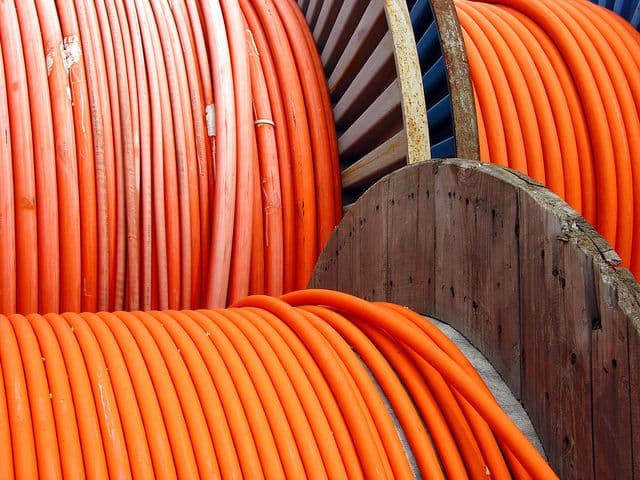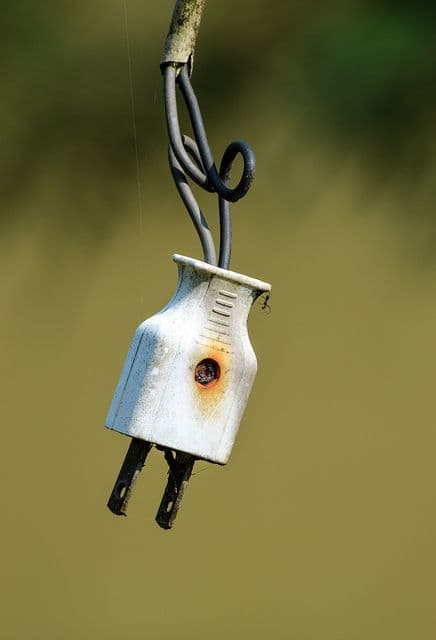Are you looking for a contractor?
Submit our quick form and get quotes now!
Table of Contents
5 min read
Running Underground Electrical Connections in Your Backyard


5 min read
Running Underground Electrical Connections in Your Backyard
Exterior renovationsRunning Underground Electrical Connections in Your Backyard
If you have a large yard, and therefore, perform a significant amount of yard maintenance, chances are you know a thing or two about dragging electrical wires along your lawn. Now, did you know that outlets can be mounted on soil-planted posts and wires can be buried beneath your feet? You can save yourself the hassle and frustration of pulling cords across the grass by running power underground!
Power can easily be run underground to another area of the house, as well as to a dethatched garage or outbuilding. Homeowners simply need a day to complete this job, along with some basic wiring skills. There are a few different methods to complete this project, but we’ll give you the tools to do what you choose!
How to run an underground electrical connection!
Preparation

source: Flickr, Fiber Plus
First, it is paramount that you use the correct cable to run wires underground. Experts would suggest that the only cable to use is called a UF, or underground feeder, cable. This cable has a GFCI protection. For this type of cable, there are two types of conduits that can be employed: schedule 40 PVC and galvanized rigid metal. Schedule 40 PVC is the most common type, as it is very affordable and will be finished with PVC cement. PVC conduit needs to be buried at least 18 inches deep, or 12 when covered by concrete.
If digging a shorter ditch, use a galvanized metal rigid electrical conduit, and run individual conductors inside. The conductors must be waterproof, so when shopping for them make sure they have a W on the label. Unfortunately, metal conduit is very expensive, so look for the root that provides the deepest depth and shortest length.
Next, depending on the soil type that your property rests on as well as the amount of power you’re hoping to run, digging methods will vary. If the ground beneath you is sandy, and therefore easy to dig, you can dig a deep ditch. If the ground is rocky or clay based, keep the ditch’s depth to a minimum. Regardless of your digging method of choice, it is important that you include a service entrance ell. The ell will have a removable cover that gives you access to inside wires at the above ground level. Finally, as with any electrical work, make sure to check with local and municipal codes before moving forward with this project.
Dig and Prepare the Conduit
After all the proper preparation orders have been taken care of, and you have made sure that the local codes allow for this type of work, you can begin digging the ditch you intend on rooting the cable in. This can be done with a regular shovel.
Depending on the size of the trench, some homeowners may consider renting a trenching machine to complete this job. If you’re working on your lawn, remove sod in slices and place it aside so it can be reused once the pipe is in the ground. It is best to lay the sod on plastic tarps, otherwise, you may have to rake out grass following the job.
Next, begin installing the conduit, first by dry fitting all pieces along the place where you are hoping to run your cable. If pieces have not been previously cut, you can do this with a backsaw or PVC saw. Once all pieces are cut and the length has been determined, you can join the pieces using PVC cement. Let the cement set, and once it is ready, homeowners can begin running the type UF cable through the conduit.
Connecting to power

Homeowners should have located a power source for the cable to connect to, making all necessary connections inside the house, whether this means connecting it to your home’s main panel, a ceiling box, outlet or another electrical box. You’ll want to figure out the best and easiest way for the conduit to enter your home. However, if you are running power underneath your home, this won’t be as much of a problem. Some homeowners may have to drill a hole into the side of the house to run a cable.
In other instances, the conduit will connect to a fitting that is called an “LB.” LBs have removable covers that simplify the task of pulling wire. However, the LBs need to be connected to metal boxes that transmit power. Homeowners should figure out the length of electric metal tubing they’ll need to stretch from the LBs to their corresponding metal boxes, and these metal boxes will be the connection between the house wiring and whatever homeowners are attempting to power.
Once the connection between the metal box and LB is successful, you’ll want to thread the LB onto the end of the pipe. Once all conduits have been placed in the trench, remove covers from the LBs and push the wire through the conduit. To get power, you will require two wires, one black and one white. If you intend on adding more than one circuit, at least 3 wires will be required.
The wiring methods of this project can become complicated if not followed directly, so if you're having a bit of trouble figuring it all out, why not get in touch with a professional!? In some parts of Canada, the law requires you to do so.
Disclaimer: All tasks that touch on electricity are very risky and should be completed under the safest conditions. Additionally, in certain parts of Canada, only certified electricians are allowed to do this type of work. Please check before you do any electrical work yourself.
Get 3 renovation quotes for your underground wiring project
RenoQuotes.com can help you find a specialist for your underground wiring project. If you submit your project to us, we’ll put you in contact with top-rated contractors. Fill in the form on the homepage (it only takes a few minutes), and you will get estimates from trusted professionals.
Dial 1-844 828-1588 to speak with one of our customer service representatives.
Last modified 2023-11-07
Looking for something else?
Related articles
The latest industry news, interviews, technologies, and resources.

N/A • 07 Nov 2023
Wood window frames add a naturally beautiful element to both the interior and exterior of your home. However, as with everything of natural beauty, wood needs to be carefully looked after so that it can continue to have pure charm and appeal. You can easily extend the life of wood frames by making sure they are properly inspected and maintained, saving time and money in the long run.

N/A • 07 Nov 2023
Planning out the layout, decor and surfaces of your home for your family's needs and wants can be tricky. Especially in busier rooms of the house, like the kitchen or the bathroom, it can be a challenge to keep things neat, tidy and practical while allowing things to look good.

Christime Simard • 07 Nov 2023
Often confused with demolition, stripping aims to accomplish much more than razing everything in its path. While its process is indeed comparable, the fact remains that it is first and foremost synonymous with renewal and not destruction.

N/A • 23 Nov 2019
Walls are blank canvases just waiting to be explored. Adding personality and character to a room by way of our walls isn’t all that difficult. If you’re a homeowner looking to move beyond the obvious paint choices of gloss, semi-gloss or matte, then decorative wall panelling could be right up your alley.

Amanda Harvey • 07 Nov 2023
When it comes to home renovation, you might want to break out the hammer and nails as soon as possible. Before you do, it’s important to consider the types of permits you might need for the project.